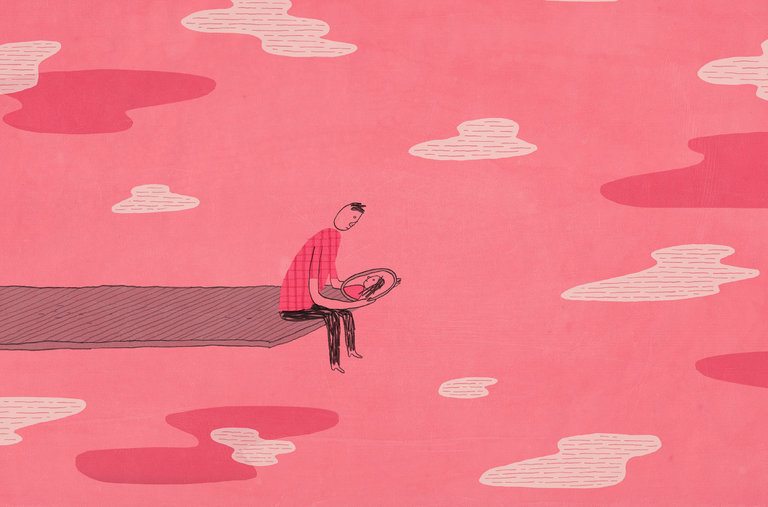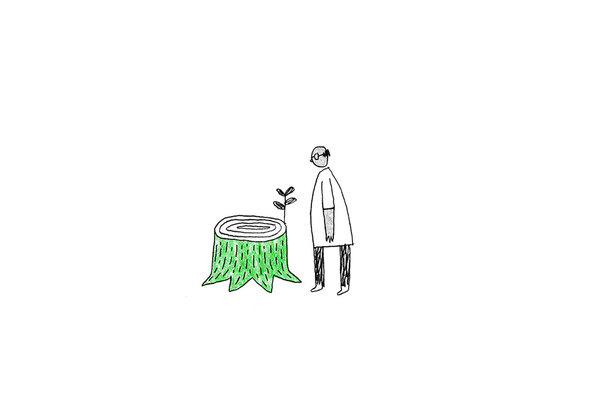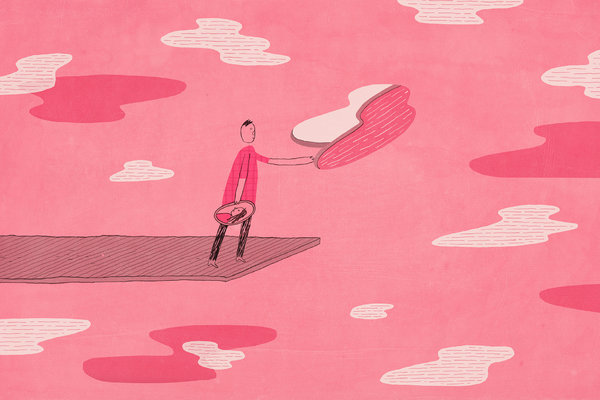Putting up pictures in our new house last fall, I opted for nails, not tape. My family had just relocated from California to Brooklyn, our fourth move in five years. With so much change, it had been hard to feel settled, but it was my job to try.
I wanted to create a sense of stability while my children, then 8 and 11, were still innocent enough to believe that life could be stable. I wanted to create a sense of hope while my husband, Jonathan, was still young enough to start over.
Although I was only 45, my precarious health had taught me to use time wisely. On the agenda that day was to get settled in our new home, a wide brownstone with big windows, just like I had always wanted. With light reflecting against high ivory walls, the house had a familiar feeling of peace. As Jonathan tended to the unpacking, I charged myself with decorating, a job that sounded frivolous, but I knew better.
With the children at school, I sat at the kitchen table, digging through boxes. Over the years I had taken thousands of photos, wanting to document every moment of our time together, make each one extend as far as possible. I was looking for pictures that had the power to turn bitter memories into sweet. Images that said, “I love you more than anything.” Images that whispered, “I can’t express how sorry I am to leave you.”
I headed upstairs with photos, nails and a hammer. My children had their own bedrooms, each with a window looking into the garden. I would start there and work my way through the house. By the time they got back from school, our new home would be filled with cozy memories. If I couldn’t make my family feel safe, I could at least create some level of comfort.
I flipped through options, looking for shots of us touching skin and smiling wide to convey happy intimacy, of us camping to hint at the natural cycle of life and of them with family and friends to show that love is always available.
Every day, I prepare. I take a slew of medications and supplements. I go to this doctor, that psychic. I pray. I keep nitroglycerin in my car, in my backpack, by my bed. My hospital basics are packed. After eight heart attacks, I have learned to be ready.
Jonathan ducked his head in. “How’s it going in here?”
“You scared me,” I said.
“Join the club.”
Jonathan is seven years older than me. He has a stressful job. He doesn’t take vitamins or exercise regularly. Even so, my health has been the primary focus for our entire marriage. Nothing can compete with spontaneous coronary artery dissection, an uncommon and incurable condition that has taken over my left, right and diagonal arteries. I could have a fatal heart attack tomorrow or I could not. It’s the not knowing that has made me live in the present.



“How does this look?” I said, holding a wooden frame against the wall. In the photo, my daughter is a baby asleep in my arms. I’m kissing her forehead, wrapping my sweater around her tiny body. I remember this moment and, because I have told her about it time and time again, so does she.
“It’s not just good,” he said, “it’s good enough.” Of course, he was right.
Since I had my first heart attack at 32, we have opened up to each other in ways that wouldn’t have seemed possible before. We no longer indulge in setting and not meeting expectations. We stay present and keep moving forward. We help each other get on with whatever comes next. With uncertainty, we have become confident partners.
The first time I had a heart attack, no one took me seriously. The emergency room doctors assumed I was having a panic attack. What could be wrong with the newlywed with a Pilates body?
No one paid any attention until the blood test for troponins came back positive. Troponins are proteins that are released when the heart has been damaged. Looking me up and down, they asked if I had taken cocaine.
One by one, the doctors walked away from my case, prescribing medication for high blood pressure and high cholesterol, problems I didn’t have.
We turned crisis into opportunity. The universe, we reasoned, was inviting us to live our dream life. Jonathan and I moved to China. We adopted two children. I started a business and wrote a book. Life was a glamorous adventure; I got everything I thought I wanted.
Then, eight years into that perfect life, I had another heart attack. My heart stopped for 10 seconds.
When you count them, 10 seconds isn’t long. My children can’t get their shoes on in 10 seconds. Sometimes it takes 10 seconds for me to remember where I parked the car. But 10 seconds is long enough to see what’s on the other side of life — to feel my grandpa again, to see the light, to find peace.
Those 10 seconds changed everything. After my near-death experience, we moved back to the United States. I gave up my business. I never went back to my old life. I never wanted to.
Because of my condition, I feel an urgency to help my family understand who I am and what I believe in. Shedding old ideas about work and success, I have been able to show them what matters most to me, and I have been present as they explore what matters most for themselves.
This way of life is work. It takes double doses of spirituality, optimism and pragmatism. Every day, we practice. We talk about what life would look like without me, we joke that I am the Health Queen, we pray. Their confidence is my greatest achievement. In our bubble, I’m just a mother and a partner, and for that, I’m both grateful and proud.
Over the years, we have shared more about life and what I have experienced in death. We have learned to accept what is and release what isn’t. We have had time to make plans for this life and also talk openly about wanting to be a family again in the next. After this incarnation, we hope to be hawks.
So far, our luck has stood up; I have recovered from every attack. My heart’s ability to pump blood actually increased after the last five heart attacks. Its ejection fraction went from 47 to 36 to 50. A normal range is 55 to 65. With so many unknowns, there is a lot of room for miracles.
Through the window, I saw the neighbor feeding an impressive congregation of squirrels and birds. Our dog raced to the fence. “Stop barking!” I called out. I rapped on the window to get her attention.
When I yell, my chest tightens. I sense heart attacks long before doctors can. I have learned to trust myself and so I do. I put down my tools, sat on the edge of my daughter’s bed. Heart attacks have shaken me while I was working out, house hunting, sleeping, getting ready for yoga and helping with homework. My heart makes no guarantees.
The tightening across my chest stretched like a rubber band. There was a pinching close to the defibrillator that was implanted near my heart. A new discomfort but not an attack. As soon as my heart relaxed, I returned to selecting pictures.
More than decorating, I was curating my legacy. These images would surround my family the next time I went to the hospital, and they would provide comfort if I didn’t come back. These pictures would become priceless.
“I love you from here to Paris to Ubud,” I say to my children when I put them to bed, calling out places we used to go before I anchored us closer to home. My interests don’t extend so far anymore. I stay with my children until they fall asleep, and, in the morning, they crawl into bed with us. We are so lucky. I wouldn’t give up this intimacy for anything.
To stay with my family, I have tethered myself to new ways of doing things. I have stopped eating and sleeping the way I want. I have exercised more, then less, then not at all. I have learned to rely on doctors more, then less, then not at all. I have hunted for possible cures more, then less, then not at all. What matters most is already in front of me.
This heart has provided complete clarity, become a trusted instrument for focus. Fear is a distraction; love and gratitude are my true purpose. That morning, all I could do was stay clear on what matters most. I picked up the hammer and nail. I could see it come together: a house filled with happy memories, a place we could settle.
Mary Bergstrom, who lives in Brooklyn, is the author of “All Eyes East: Lessons from the Front Lines of Marketing to China’s Youth” and is at work on a memoir.
Modern Love can be reached at modernlove@nytimes.com.
To hear Modern Love: The Podcast, subscribe on iTunes or Google Play Music. To read past Modern Love columns, click here. Continue following our fashion and lifestyle coverage on Facebook (Styles and Modern Love), Twitter (Styles, Fashion and Weddings) and Instagram.

